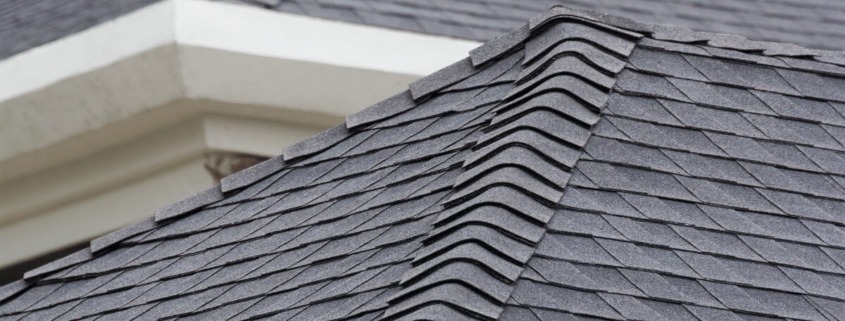How Important Is Venting Your Roof?
Proper roof ventilation is essential for maintaining the longevity and performance of your roof, as well as the overall health of your home. For homeowners in New Castle County, DE, understanding the importance of roof ventilation can help prevent costly issues such as moisture buildup, mold growth, and structural damage. In this article, we’ll explore why venting your roof is crucial and provide insights from American Craftsmen, LLC, your local roofing experts.
Benefits of Roof Ventilation
Roof ventilation offers several key benefits that protect and enhance your home:
Temperature Regulation
- Heat Reduction: Proper ventilation helps expel hot air from the attic, reducing the overall temperature of your home and easing the load on your air conditioning system.
- Energy Efficiency: By keeping your home cooler in the summer, roof ventilation can lead to lower energy bills and improved energy efficiency.
Moisture Control
- Preventing Condensation: Ventilation helps manage moisture levels in the attic, preventing condensation that can lead to mold and mildew growth.
- Protecting Structural Integrity: Excess moisture can weaken the roof deck and structural components, leading to costly repairs and potential roof failure.
Extending Roof Lifespan
- Reducing Heat Damage: Excessive heat can accelerate the aging of roofing materials, causing shingles to crack and deteriorate prematurely.
- Preventing Ice Dams: In colder climates, proper ventilation helps prevent ice dams by maintaining a consistent roof temperature and allowing snow to melt evenly.
Types of Roof Ventilation
Several types of roof ventilation systems are available, each with unique benefits:
Ridge Vents
- Continuous Airflow: Installed along the roof ridge, these vents provide continuous airflow along the entire roof length.
- Discreet Appearance: Ridge vents blend seamlessly with the roofline, maintaining the aesthetic appeal of your home.
Soffit Vents
- Intake Vents: Located under the eaves, soffit vents allow cool air to enter the attic, balancing the airflow system.
- Essential for Balance: They work in conjunction with ridge vents or other exhaust vents to create a balanced ventilation system.
Gable Vents
- Sidewall Installation: Installed in the gable ends of the attic, these vents allow hot air to escape from the attic.
- Supplementary Ventilation: Gable vents can be used alongside other ventilation types for additional airflow.
Attic Fans
- Mechanical Ventilation: Attic fans actively expel hot air from the attic, providing more controlled ventilation.
- Temperature Control: These fans can be thermostat-controlled to activate only when temperatures reach a certain level.
Signs of Poor Roof Ventilation
Identifying the signs of inadequate roof ventilation can help you address issues before they cause significant damage:
Increased Energy Bills
- Inefficient Cooling: Poor ventilation can make your home harder to cool, leading to higher energy bills during hot weather.
Mold and Mildew Growth
- Moisture Issues: Visible mold or mildew in the attic or upper floors indicates excess moisture due to poor ventilation.
Premature Roof Aging
- Shingle Deterioration: Cracked, curled, or missing shingles can be a sign of excessive heat buildup in the attic.
Ice Dams
- Winter Problems: Ice dams along the roof edge in winter suggest uneven roof temperatures, often caused by poor ventilation.
Improving Roof Ventilation
Enhancing your roof ventilation involves several steps:
Professional Assessment
- Inspection: A professional roofing contractor can assess your current ventilation system and identify areas for improvement.
- Recommendations: Based on the assessment, they can recommend the best ventilation solutions for your specific roof type and climate.
Installation
- Adding Vents: Installing additional vents, such as ridge or soffit vents, can improve airflow and balance the ventilation system.
- Upgrading Existing Vents: Replacing old or ineffective vents with newer, more efficient models can enhance ventilation.
Maintenance
- Regular Inspections: Periodically check vents for blockages, damage, or wear and tear.
- Cleaning: Keep vents clear of debris, such as leaves or bird nests, to maintain proper airflow.
FAQs
How much ventilation does my roof need?
- Answer: The general rule of thumb is 1 square foot of ventilation per 150 square feet of attic space, split evenly between intake and exhaust vents.
Can poor ventilation affect indoor air quality?
- Answer: Yes, poor ventilation can lead to increased moisture and mold growth, negatively impacting indoor air quality and potentially causing health issues.
Is roof ventilation necessary in colder climates?
- Answer: Yes, proper roof ventilation is essential in colder climates to prevent ice dams and manage moisture levels, protecting the roof structure.
Can I add ventilation to an existing roof?
- Answer: Yes, additional vents can be installed in an existing roof to improve ventilation. A professional roofer can assess and recommend the best options for your home.
Conclusion
Proper roof ventilation is vital for maintaining the health and longevity of your roof and overall home. It helps regulate temperatures, control moisture, and extend the lifespan of your roofing materials. For expert roof ventilation solutions in New Castle County, DE, trust American Craftsmen, LLC. Contact us today for a professional assessment and ensure your home remains comfortable and protected year-round.
Ensuring your roof is properly ventilated can save you from costly repairs and improve your home’s energy efficiency. For reliable roofing services and ventilation solutions in New Castle County, DE, reach out to American Craftsmen, LLC. Schedule your inspection today and keep your home safe and comfortable.




Leave a Reply
Want to join the discussion?Feel free to contribute!